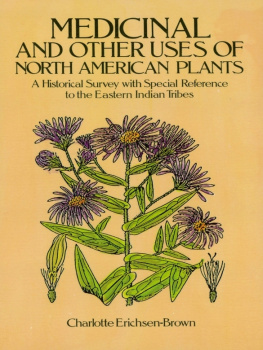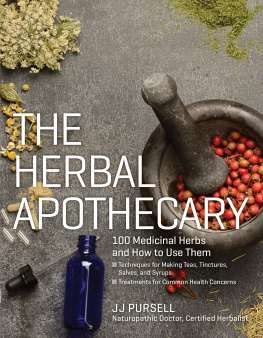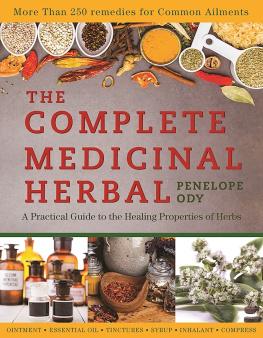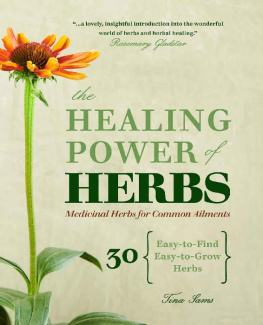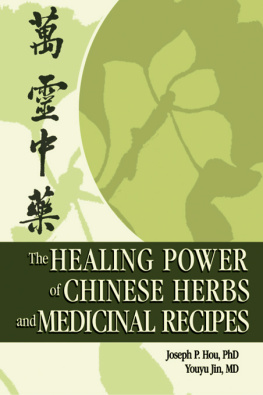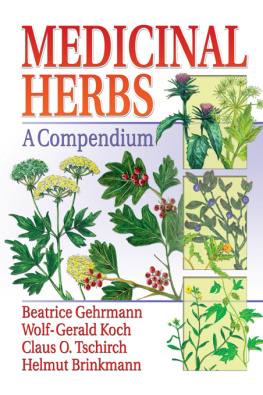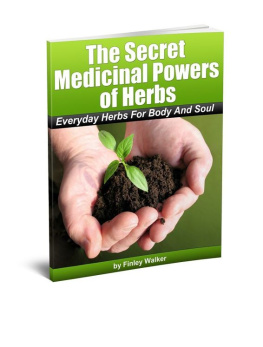Brenda Jones - Medicinal Herbs of Eastern Canada
Here you can read online Brenda Jones - Medicinal Herbs of Eastern Canada full text of the book (entire story) in english for free. Download pdf and epub, get meaning, cover and reviews about this ebook. year: 2020, publisher: Nimbus, genre: Home and family. Description of the work, (preface) as well as reviews are available. Best literature library LitArk.com created for fans of good reading and offers a wide selection of genres:
Romance novel
Science fiction
Adventure
Detective
Science
History
Home and family
Prose
Art
Politics
Computer
Non-fiction
Religion
Business
Children
Humor
Choose a favorite category and find really read worthwhile books. Enjoy immersion in the world of imagination, feel the emotions of the characters or learn something new for yourself, make an fascinating discovery.

- Book:Medicinal Herbs of Eastern Canada
- Author:
- Publisher:Nimbus
- Genre:
- Year:2020
- Rating:5 / 5
- Favourites:Add to favourites
- Your mark:
- 100
- 1
- 2
- 3
- 4
- 5
Medicinal Herbs of Eastern Canada: summary, description and annotation
We offer to read an annotation, description, summary or preface (depends on what the author of the book "Medicinal Herbs of Eastern Canada" wrote himself). If you haven't found the necessary information about the book — write in the comments, we will try to find it.
Medicinal Herbs of Eastern Canada — read online for free the complete book (whole text) full work
Below is the text of the book, divided by pages. System saving the place of the last page read, allows you to conveniently read the book "Medicinal Herbs of Eastern Canada" online for free, without having to search again every time where you left off. Put a bookmark, and you can go to the page where you finished reading at any time.
Font size:
Interval:
Bookmark:
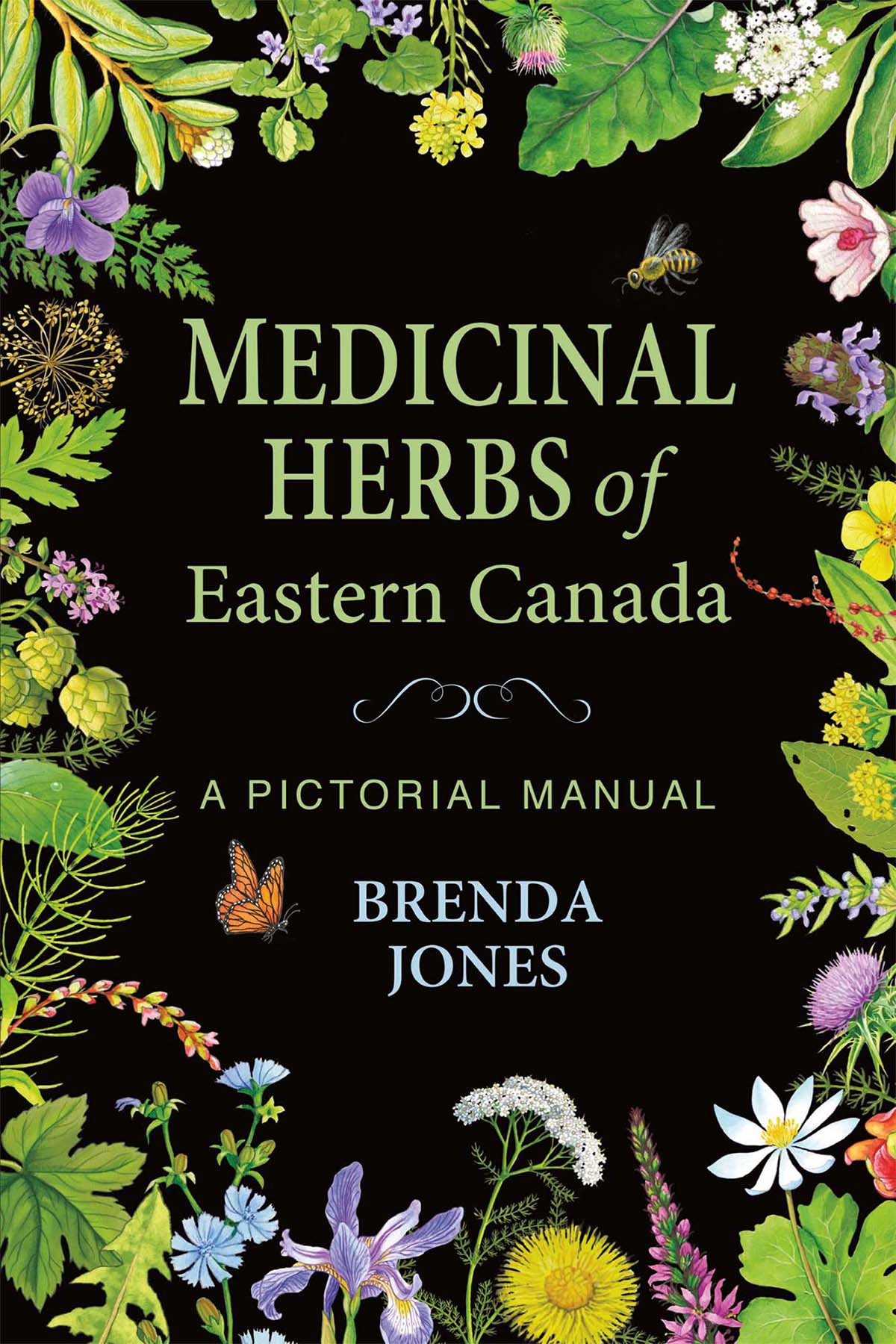
Copyright 2020, Brenda Jones
All rights reserved. No part of this book may be reproduced, stored in a
retrieval system or transmitted in any form or by any means without the prior
written permission from the publisher, or, in the case of photocopying or
other reprographic copying, permission from Access Copyright, 1 Yonge
Street, Suite 1900, Toronto, Ontario M5E 1E5.
Nimbus Publishing Limited
3660 Strawberry Hill Street, Halifax, NS, B3K 5A9
(902) 455-4286 nimbus.ca
Printed and bound in Canada
NB1460
Editor: Emily MacKinnon
Cover Design: Heather Bryan
Interior Design: Brenda Jones & Rudi Tusek
Library and Archives Canada Cataloguing in Publication
Title: Medicinal herbs of Eastern Canada : a pictorial manual /art and text by Brenda Jones.
Names: Jones, Brenda, 1953- author, illustrator.
Description: Includes bibliographical references and index.
Identifiers: Canadiana (print) 20200165038 | Canadiana (ebook) 20200165046 | ISBN 9781771088626
(softcover) | ISBN 9781771088633 (HTML)
Subjects: LCSH: Medicinal plantsCanada, EasternIdentification. | LCSH: HerbsTherapeutic use
Canada, Eastern. | LCSH: HerbalsCanada, Eastern. | LCSH: Naturopathy. | LCGFT: Field guides.
Classification: LCC QK99.C3 J66 2020 | DDC 581.6/3409713dc23

Nimbus Publishing acknowledges the financial support for its publishing
activities from the Government of Canada, the Canada Council for the Arts,
and from the Province of Nova Scotia. We are pleased to work in partnership
with the Province of Nova Scotia to develop and promote our creative
industries for the benefit of all Nova Scotians.
To Merlin,
for his patience and support over the last
few years as we trekked through ditches,
fields, and marshes, swatting mosquitoes
and gathering plants
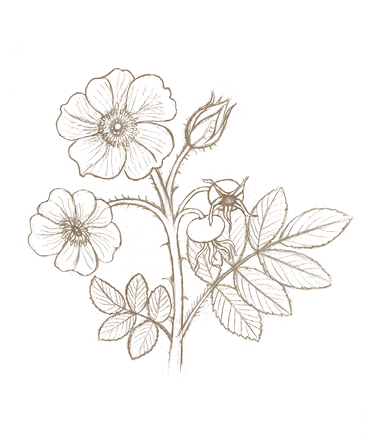
Many thanks to the people of Eel River Bar First Nation in northern New Brunswick for sharing their knowledge, teachings, and ceremonies.
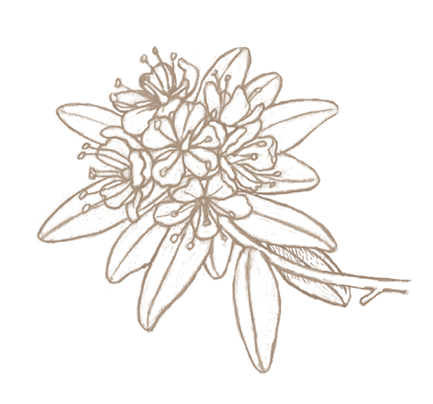
Ever since ancient times herbs have played a major role in healing in all cultures throughout the world. Traditional remedies were passed down from one generation to the next, using local plants and trees to cure disease, heal wounds, or ease pain. Shamans, healers, and midwives played an important role in society, particularly in Indigenous cultures, and their knowledge was gifted to future generations through word of mouth so as not to lose these important medicines. Unfortunately, much of this knowledge has since been lost, mostly in the last hundred years, due to the takeover of modern science and the pharmaceutical industry, attempted genocide of Indigenous cultures, and destruction of rare species and their habitats. However, there has been a resurgence of interest in medicinal herbs recently as people are dealing with more and more chronic disease and finding little relief in pharmaceuticals. Although they will always play a major role in the medical industry, drugs are not the only answer; there is much room for a more gentle, holistic approach to healing, and for working with nature and all the gifts the earth has given us.
I first developed an interest in plants as a young girl when my mother and I would take off into the woods for an afternoon with our tin pans to create fairy gardens. We amassed all sorts of mosses, Ground Spruce, Indian Pipes, Teaberries, Mayflowers, Violets, and bright-coloured toadstools, arranging them into the tiny pan gardens along with a few rocks and sticks. When we brought them home they were set up on our front step or amongst the Hollyhocks to attract any magical creatures that may pass by in the night. Although it was the time spent with my mother that I keep close to my heart, I also appreciate how she passed on her love of the forests and flowers. Nature has been a source of grounding and comfort for me ever since, whether through planting my own garden and digging my fingers into the sweet-smelling, loamy soil, or just through taking walks by myself in the countryside. There is a healing energy in the earth, and the farther we are away from it, the more disconnected we are from our own souls.
I spent the first twenty years of my life on Prince Edward Island, a place vibrant with a healing energy that easily seeps into every pore when you spend any time in the great outdoors. I think I only learned to truly appreciate the beauty of Atlantic Canada after I spent thirty years in a big city; sometimes we can only understand what we had when it is no longer there. During my time in Montreal, I was so focused on earning a living and bringing up my daughter that I failed to recognize my body was craving the ocean and the peace and safety of cool forests and open fields. I longed for the place where I could see the horizon and the stars, watch the sun rise and set, and observe storms rolling in towards the land. I would often drive for two hours just to escape the noise and pace of the city, only to find that hundreds of other people had decided to do the same thing. My short visits to the Island were never enough to fully recharge my batteries, and by the time I was in my fifties I was burnt out and had chronic insomnia and digestive problems. I knew I had to make a permanent change.
That change came in the form of a cottage on the south shore of PEI, a little piece of paradise, with 360 degrees of horizon, perched on the red cliffs of the Northumberland Strait. It was there that I began to reconnect with my roots and find a sense of balance. I was surrounded by wildflowers, so every day I would roam the fields and shores, collecting bouquets and shells. Before long, I developed an interest in knowing the species I was finding. I amassed stacks of herb books and researched plants online. I soon realized many of these plants were medicinal and could possibly help with my health issues. This led me to creating binders full of information cut and pasted together, and soon I was experimenting with tinctures and salves and my kitchen was full of drying herbs. I knew I had found a new passion.
It wasnt until I moved back to the Island permanently that I started to see the potential for putting together a book on herbal medicines. All the books I had found dealt with European or American speciesoften unavailable in our Maritime climateand it was frustrating trying to identify anything from the tiny photos in the field guides. After mistaking Cow Parsnip for Angelica once (fortunately, I had not tried to pick it, as it probably would have caused severe dermatitis!) I resolved to create my own illustrations. This was not a big stretch for me, as I have been illustrating childrens books and making a living as an artist for most of my life. Before I knew it, I had a couple of dozen drawings completed and realized I was well on the way to making a book. My publisher loved the idea and I loved the thought of spending so much time with these amazing plants, but it never occurred to me that it would take me the better part of five years to completealthough Ive enjoyed every minute of it.
At this point in my life I cant call myself an herbalist, because I believe that title belongs to those who have dedicated their lives to understanding herbs and using them to heal others. It takes many years of study of the properties of plants, knowledge of how the body works, and, according to true herbalists, understanding the subtle energies of each species and how they interact with our own energy on a deeply personal level. My real goal with this book was to create detailed pictures of the herbs available in Atlantic Canada to facilitate identification for amateur collectors, and to give the average person an overview of their properties and how to use them.
Font size:
Interval:
Bookmark:
Similar books «Medicinal Herbs of Eastern Canada»
Look at similar books to Medicinal Herbs of Eastern Canada. We have selected literature similar in name and meaning in the hope of providing readers with more options to find new, interesting, not yet read works.
Discussion, reviews of the book Medicinal Herbs of Eastern Canada and just readers' own opinions. Leave your comments, write what you think about the work, its meaning or the main characters. Specify what exactly you liked and what you didn't like, and why you think so.




